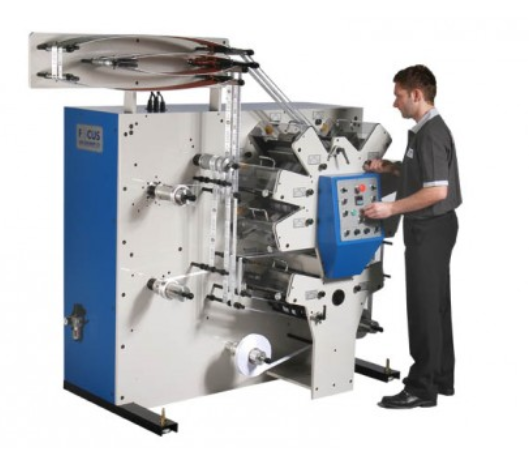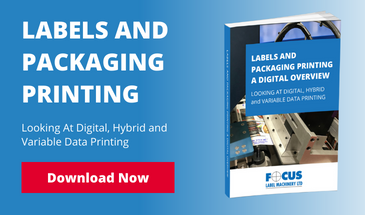
Technology in the print industry continues its rapid evolution, especially where label printing is concerned. Thanks to constant change and innovation, there are now several ways to print labels on ribbons. Whether thermal transfer technology, digital offset, dye sublimation, hybrid or ink jet technology is employed, businesses seeking options for printing on ribbon labels are certainly spoiled for choice.
Screen Printing
Historically this is one of the oldest systems, although it fell out of favour there are some applications where silk screen still provides the best solution. In this process, a screen is coated with a photo-sensitive emulsion and left to dry. Once dry, the screen is placed onto a vacuum light table, where it is exposed to halide light at high wattage. Following this step, the screen is washed out using a pressure washer at 1,300 psi to reveal the image. It can then be mounted onto the Screen Press. In screen printing, each colour in the image being printed requires a separate screen.
This process can be used to print decorative ribbons & garment labels onto ribbon via the use of small screens. However because it is such a slow & time-consuming process, other methods tend to be far more effective on larger runs.
Rotary Letterflex
Letterflex printing system is a combination of Flexo/Letterpress technology with Screen inks specially adapted for printing textile Ribbons. Raised letterpress or Flexo photopolymer plates provide the image by picking up ink from an Ink reservoir transferring it directly to the Ribbon. It’s a high speed process printing several colours in a single pass before drying and rewinding. High end machines can print photo standard images, several ribbons simultaneously & even cut labels in line. The vast majority of printed ribbons & labels are produced in this manner.
Dye Sublimation
Dye sublimation is one of the most popular ways to print decorative ribbons, Tapes & Elastics. It is actually a two part process, with the image printed in reverse onto Paper; this image is then transferred from paper to the ribbon via heat. This converts it from a solid to a gaseous state, allowing it to enter the open pores of polyester fabric. Once this occurs and the temperature is lowered, the pores close and the ink becomes a part of the material. The Transfer process is slow at around 2 Mts / min, therefore several ribbons need to be processed at the same time to be economical.
NEW TECHNOLOGY:
Digital is already making a significant impact in Wide web printing of textiles within home furnishing & Sportswear, replacing slow silk screen equipment. The ability to change design at an instant without the long changeover times or high cost Rotary Silk Screens units are an obvious advantage. However not all digital printing systems are compatible with the stringent requirements in the Apparel products for high wash resistance & Oekatex safety standards.
Thermal Transfer Printing
In thermal transfer printing, a thermal print head applies ink to a label via a heated ribbon. This allows any text or image printed by this method to be long-lasting and durable. This printing method produces images of high quality and accuracy. Highly-defined image edges, as well as the thermal printer’s ability to produce text, graphics and bar codes in two-dimensional format, is what makes this method such a powerful one. Thermal transfer printing sees heat being applied to a ribbon, which causes ink to melt onto the fabric. The ink becomes absorbed into the fabric, becoming a part of it.
Digital Offset
When smaller quantities of items need to be printed on demand, digital offset is usually the first choice. The general print industry has undergone a significant transformation on the digital level. However, technology has yet to develop to the point where it is viable for the production of textiles or garment labels.
Ink Jet & Dye Sublimation
Ink jet technology continues to improve in speed and efficiency, making it one of the most cost-effective fabric printing technologies. All that’s needed is the right substrate, which in this case is special fabric or transfer paper. This paper is inserted into an ink jet printer in place of regular paper. Then, it prints like paper would, with the ink being applied to the surface in droplet form before becoming absorbed by the paper. On the industrial level, wide web presses are being used for the purpose of printing high visual sports & promotional garments using ink jet technology. This is because nozzle heads and existing ink can be easily integrated with the web press.
In the future we will see dedicated Ink jet systems for productions of Garment label application, we are working on this right now.. Watch this space.
The Hybrid Press
Hybrid printing presses are new to the market and are generating much enthusiasm. The hybrid press is a combination that allows for the seamless switching between digital and conventional printing methods. This holds many advantages for both operators and customers. For the customer, these hybrid printers provide high quality, cost effective results.
Which Fabric Printing Machine Is Best?
The decision about what method to choose for printing garment labels is really up to the individual. Deciding which machines and methods are best will depend on what material the labels are made of, as well as what kind of end result is desired. Another consideration is longevity; the longer you wish your garment labels to last, the more permanent the printing method will need to be and in this area conventional printing still reigns supreme.







